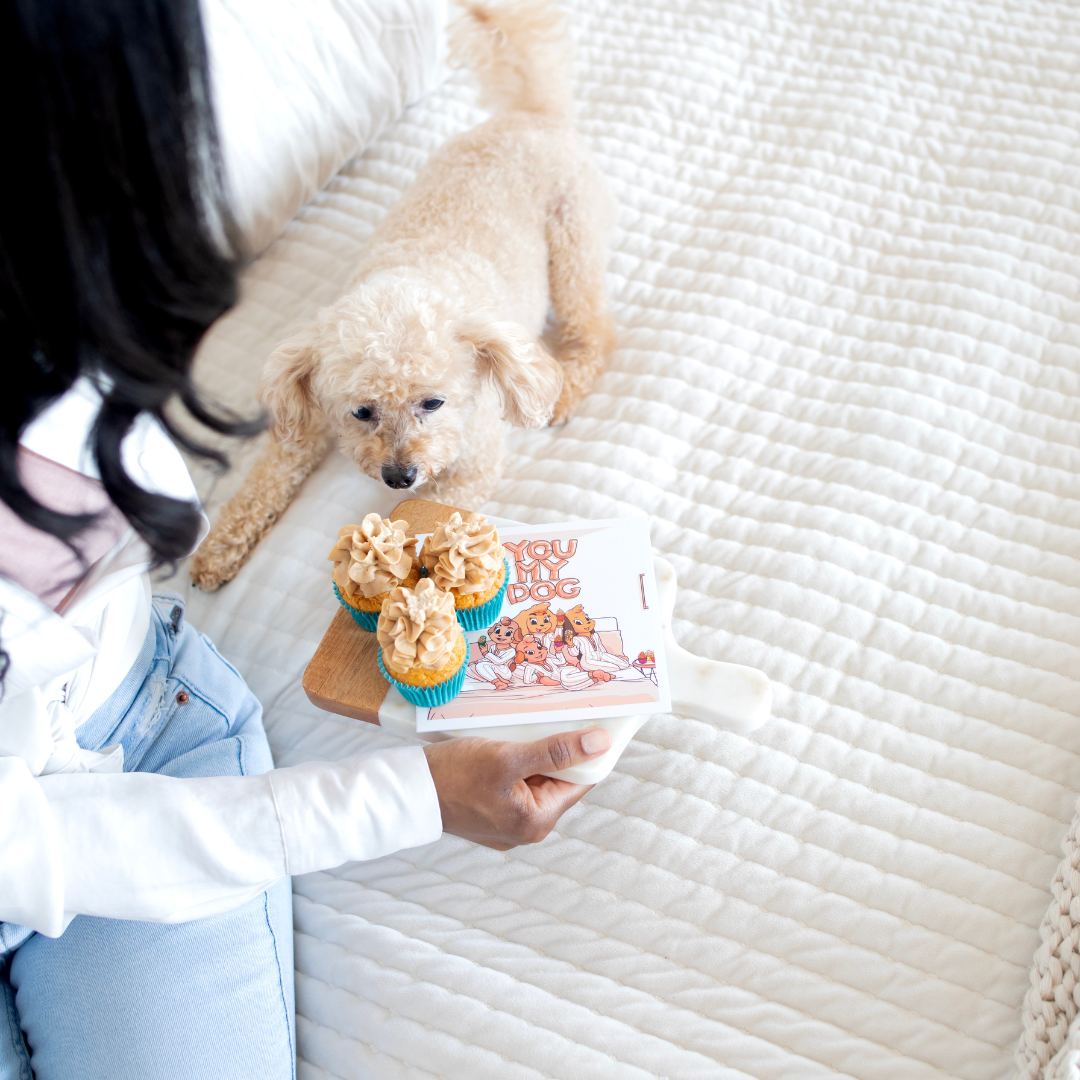
Last week, I learned a new term: money dysmorphia. According to Bankrate, money dysmorphia is when your perception of your financial situation doesn’t represent reality. It’s a distorted view of your finances.
Dr. Lanre Dokun, psychiatrist and founder of Healthy Minds NYC, states that money dysmorphia is a form of anxiety triggered by self-comparison. It’s the modern-day phrase for “keeping up with the Joneses” and an extreme version of lifestyle inflation.
Lifestyle inflation occurs when increased income leads to increased spending on non-essential items and services, including your dog. However, we want to ensure we keep enhancing our financial well-being. So, in this blog post, we’re discussing lifestyle inflation and how to keep your dog mom expenses in check to reduce financial anxiety.
WHAT IS LIFESTYLE INFLATION & HOW TO RECOGNIZE IT
Lifestyle inflation, also referred to as lifestyle creep, is when your spending rises to keep pace with an increase in pay. This often leads to higher living costs and can prevent individuals from saving or investing for future goals. For dog moms, this could lead to additional splurging on luxury pet products, expensive grooming services, or more frequent impulse buys for you or your dog. The first step is recognizing the signs.
Increasing expenses despite no significant change in needs and buying higher-end or luxury items without a corresponding increase in value or utility. Difficulty saving or investing due to rising discretionary spending is also a sign. More importantly, not understanding your money story and the emotions behind your financial decisions. So, the next step is creating a plan.
Know Your Money Story – A money story is your relationship with money, including beliefs, thoughts, and feelings developed from childhood about money. Knowing your money story helps identify spending triggers.
Develop A Plan Aligned with Your Story – Use your money story to identify what’s triggering your financial decisions and who’s influencing your purchases. Establish financial goals that work for you.
Set Your Goal & Track Your Money Achievements – Lifestyle inflation often comes from comparing yourself to others. Set a financial goal and track your achievements instead of comparing your wins to someone else’s.
Counter Negative Comparisons with Positive Ones – Use affirmations or positive reinforcement anytime you slip into negative self-talk.
WHAT IS EMOTIONAL SPENDING
Lifestyle inflation is part of a bigger conversation: emotional spending. Emotional spending is making purchases based on feelings rather than need or financial rationale. This is often referred to as retail therapy. Emotional spending can be linked to several factors:
Stress Relief – When people feel stressed, anxious, or overwhelmed, they may turn to shopping as a quick fix.
Mood Enhancement – Some people make impulsive purchases to boost their mood, indulging in shopping sprees or “treat yo’self” outings.
Social Influence – Social pressures from peers, family, or social media can significantly influence spending habits, leading to emotional purchases to fit in or keep up appearances.
Emotional spending is not necessarily bad. Most financial decisions are tied to emotions. The goal is to keep your spending emotions in check to stay centered and move towards achieving your financial goals.
LONG-TERM FINANCIAL PLANNING FOR DOG MOMS
The key is to use your emotions as the inspirational spark behind creating your financial plan. That inspirational spark is called your “why.” Weaving your “why” into your financial plan will give it meaning and help you adjust as needed. Here are a few things to consider:
Save for Future Dog-Related Expenses – Build an emergency fund to cover unexpected vet bills or health issues. Save at least three to six months’ worth of expenses. Consider investing in pet insurance to mitigate unexpected medical costs.
Plan for Life Changes – Account for potential changes in income due to job transitions or career advancements. Ensure your budget can accommodate fluctuations in earnings. Plan for moving or upgrading your living situation to accommodate your pet’s needs.
Invest for the Future – Contribute regularly to retirement accounts to ensure long-term financial security. Take advantage of employer-sponsored plans and consider opening an IRA or other retirement savings accounts. Diversify investments to protect against inflation and build wealth over time.
Adjust for Inflation – Monitor inflation rates and adjust your budget accordingly. This ensures your purchasing power remains stable and that you can continue to meet your financial goals.
WHAT ABOUT THE MONEY MISTAKES
When it comes to financial planning, mistakes happen. We all take an “L” once in a while. Don’t stay stuck in self-pity about those mistakes for too long. Here are a few ways to bounce back from money mistakes:
Name the Mistake – Assess and understand what went wrong. Identify the root cause and impact on your finances. Analyzing the error provides valuable insights to avoid repeating it.
Create a Recovery Plan – Develop a clear and actionable plan to rectify it. Adjust your budget, cut unnecessary expenses, or set up a repayment plan for any debt incurred. A structured plan helps you stay focused and motivated to get back on track.
Get Help & Educate Yourself – Seek advice from financial advisors or use resources like financial literacy courses and online tools. Educating yourself on personal finance management equips you with the knowledge to make better financial decisions.
Affirm Yourself – Mistakes and rejection are hard to take sometimes. Give yourself grace as you work through your solution. Speak and write positive affirmations to help rid yourself of negative feelings.
Lifestyle inflation and money dysmorphia are real issues that can severely impact our financial goals and create stress. And if we’re stressed, our dogs can feel it too. The key is to turn them into a plan that works for us. By recognizing the signs and creating a plan, we can keep our finances in check and work towards long-term financial success.
Now, we’d also love to hear from you. How are you planning for long-term financial success? Share your stories and connect with us @pupcakesugar.
If you’re looking to bake your dog treat, we’ve got you covered. Sign up for the Pupcake Sugar mailing list to get Sugar’s favorite birthday pupcake recipe to try at home with your dog.
Also, check out the Shop page for more of Sugar’s pupcake recipes and the stories that inspired them.
You’ll also get a chance to step into Sugar’s world. Sugar’s character is a “pupcakepreneur” that owns and operates her own pupcakery called Pupcake Sugar.


